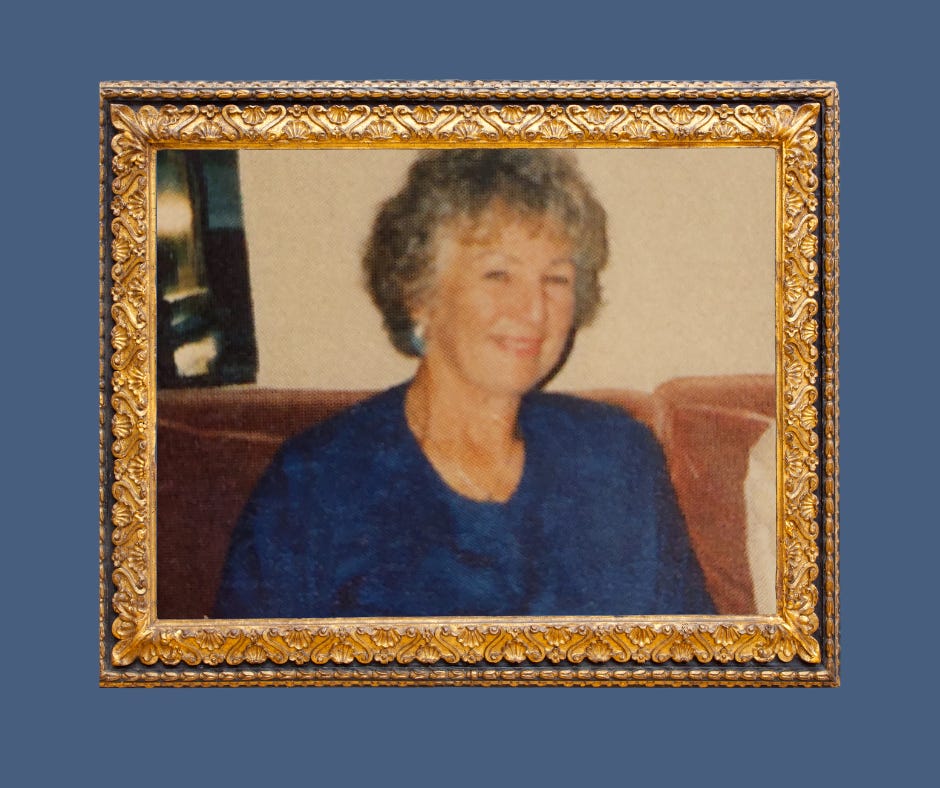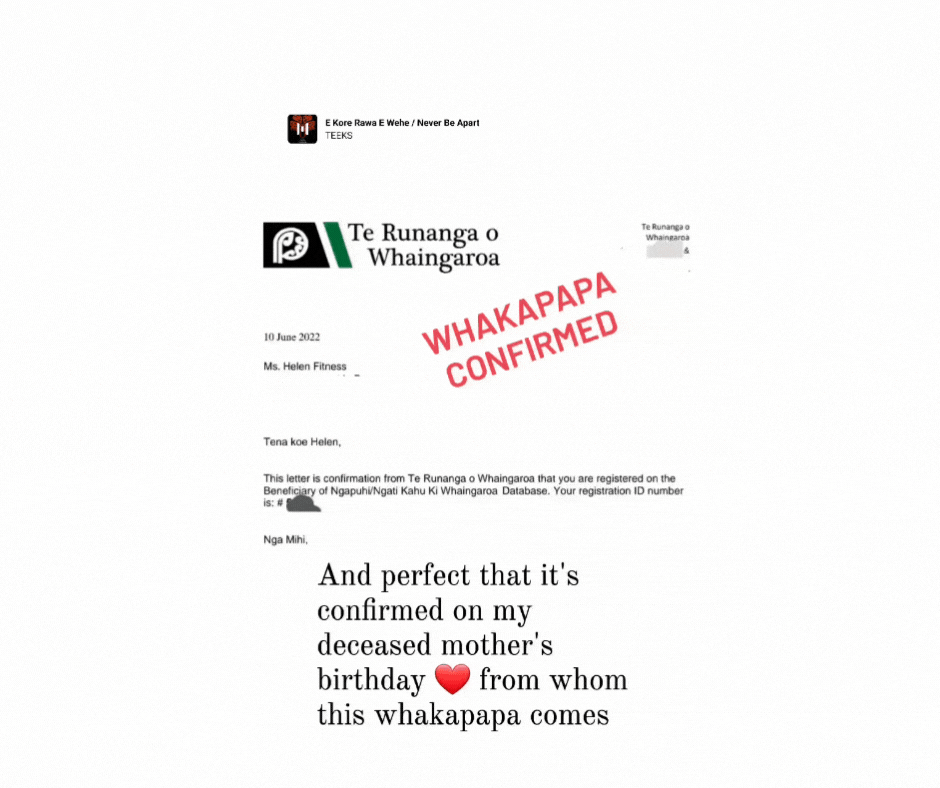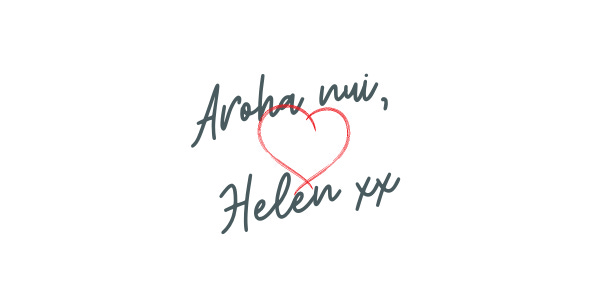Preface: As you read this, I recommend listening to Teeks, one of my favourite artists.
10th June 2022 is a momentous day.
It would have been my beautiful mother’s 90th birthday, had she not passed away, way too soon, aged 74 in 2006.
It is this day, too that I received confirmation of my whakapapa/genealogy, a whakapapa I gratefully receive from my mother’s lineage.
I am Ngāpuhi/Ngāti Kahu ki Whaingaroa iwi/tribe, Ngāti Uru hapū/sub-tribe.
I even have my own pepeha – a way I can introduce myself.
Ko Mamaru te waka
Ko Taratara te maunga
Ko Kāeo te awa
Ko Whangaroa te moana
Ko Ngāti Kahu ki Whangaroa te iwi
Ko Ngāti Uru te hapū
Ko Mangaiti te marae
Ko Tau te Rangimārie te tūpuna whare
A ko Helen tōku ingoa.
Mamaru is my canoe (on which my ancestors arrived at Aotearoa New Zealand)
Taratara is my mountain (near where my ancestors lived)
Kāeo is my river
Whangaroa is my sea
Ngāti Kahu ki Whangaroa is my tribe
Ngāti Uru is my sub-tribe
Mangaiti is my meeting ground
Tau te Rangimārie is the meeting house of my ancestors
And my name is Helen.
In tikanga Māori, we introduce ourselves formally from our tūpuna/ancestors down, introducing our individual selves last. It places our lineage, offering a full description of the person and their ancestors, creating connection to place (while conveniently, also ensuring we’re not about to enter into relationships with close relatives!)
I’ve known my Māori lineage existed but in all honesty, we didn’t talk about it much growing up. It was somewhat shameful in our Pākehā/European eyes.
My iwi is named after a wahine toa/a warrior woman, Kahutianui (1600 - before 1680).
That stands to reason.
There are nothing but wahine toa in my whānau and tūpuna – sister, aunties, nieces, cousins, grandmothers! We’re not to be messed with!
For years I have felt a pull to learn more about my whakapapa and to learn te reo Māori, for a reason I couldn’t explain. I felt drawn enough to return to my whenua/land in 2019 from Paris. When people ask me why I came back to New Zealand, I respond,
“It wasn’t a decision. It was a feeling.”
I hear te reo – I tear up.
I witness the haka – I tear up, my skin tingles.
I see moko kauae, I see beauty and mana.
News broadcaster Oriini Kaipara wearing her moko kauae with mana.
As one wise hine/sister said to me,
"Whakapapa always finds you.”
This confirmation of place – of my place in the world as tangata whenua as well as tangata tiriti (co-signatories of the country’s founding document, te tiriti o Waitangi) comes at a time in my life when I’m getting a greater sense of whom I am, and in so doing, have made the decision to dedicate myself to learning te reo, seeking a kaiako/teacher to help me.
It feels like new beginnings.
And I no longer feel apologetic for my desire to connect with te ao Māori/the Māori world – this white-presenting, middle class cis hetero woman.
It’s my birthright to explore and claim this lineage.
It’s also powerfully appropriate that this arrives just as we’re about to celebrate the first statutorily recognised Matariki/the Māori New Year on June 24th, a period in the maramataka/lunar calendar that celebrates those who have passed, the abundance of the harvest, and a time to reflect, grow – and feast!
I’ve been surprised at just how much all this means to me.
So…
ko Helen ahau.
I am Helen.




